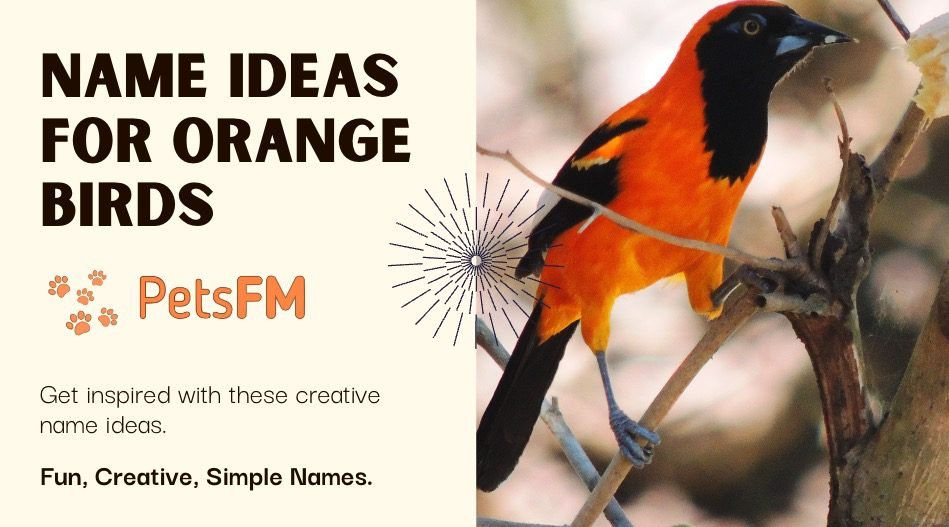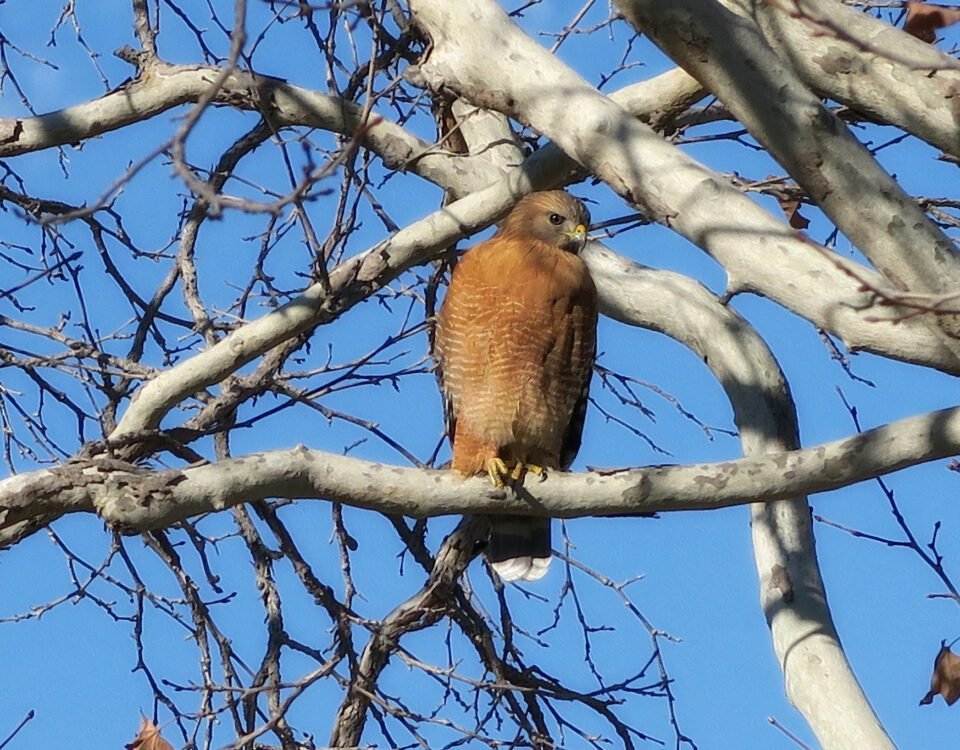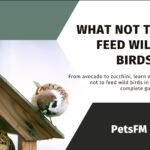


What Not To Feed Wild Birds? A-Z Complete Guide
December 27, 2023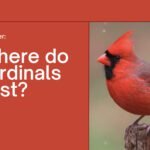


Where Do Cardinals Nest? [Nesting Habits & Behaviour]
December 27, 2023Birds are a delightful addition to any property, and their presence is something you greatly enjoy. To encourage more birds to visit, you’ve installed a bird feeder. However, you’re puzzled as to why birds aren’t flocking to your feeder, a common concern many share.
It’s important not to be discouraged by this temporary issue. Attracting birds to your property is definitely achievable. By understanding the reasons that might deter birds from using your feeder, you can implement strategies to entice them back effectively.
In this article, we will learn a few primary reasons why birds are not attracted to your bird feeder and tips on bringing them to your garden feeder.
Fifteen Reasons Why Birds Aren’t Coming To Your Feeder
Have a look at the potential reasons why birds have stopped coming to your feeder:
1: There is no black oil sunflower seed or white proso millet in the feeder
The primary reason birds may not be visiting your feeder is the absence of black oil sunflower seed and white proso millet, which are highly favored by many seed-eating birds.
Seed-eating birds, which are likely the majority of visitors to your feeder, have a strong preference for black oil sunflower seeds. These seeds are particularly appealing due to their high oil content and easy-to-crack shells, making them an ideal food source for various birds.
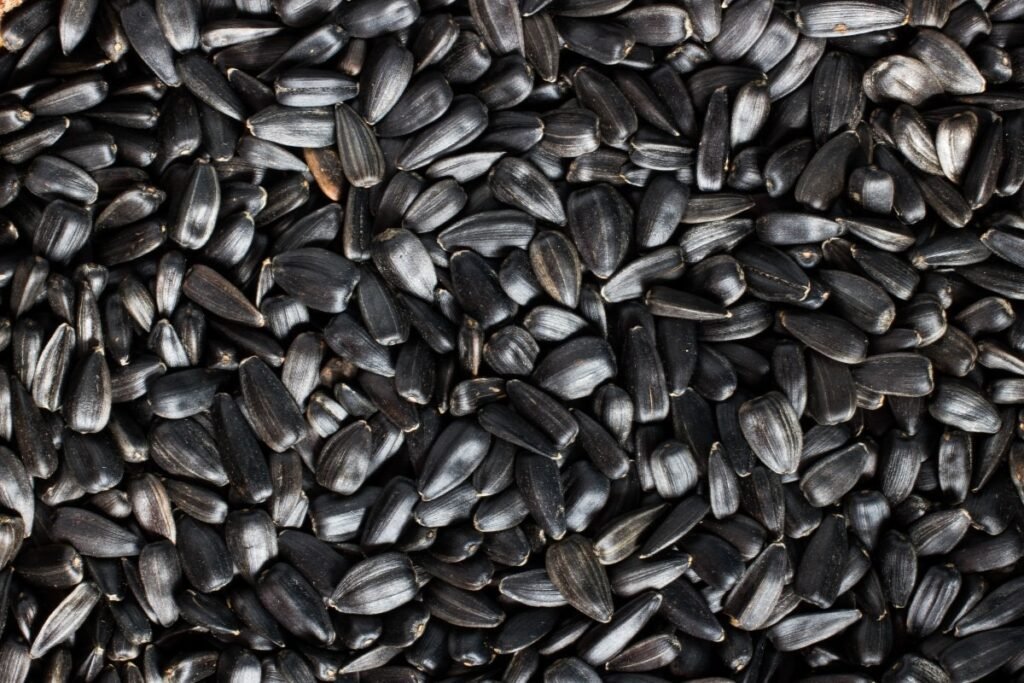

For smaller-billed birds like sparrows and juncos, white proso millet is a preferred choice. These birds find the smaller seeds easier to handle and consume.
Pro tip: To attract a diverse range of birds to your feeder, offering a mix of black oil sunflower seeds and white proso millet is an effective strategy. This combination caters to the preferences of most seed-eating birds, increasing the likelihood of them visiting your feeder.
2: Birdseed has too many filler seeds or red milo
Some bird seed manufacturers produce lower-quality products to appeal to customers seeking budget-friendly options. This is achieved by incorporating inexpensive “filler” seeds into their bird seed mixes, reducing the proportion of more desirable seeds like black oil sunflower seeds.
Red milo and cracked corn are commonly used as these filler ingredients. They are abundantly produced for the poultry industry, serving as primary feed, often called “chicken scratch.”


Red Milo
However, most native birds in the United States show little interest in eating red milo. The birds that do consume this seed, such as European house sparrows and various blackbirds (including cowbirds and grackles), are often considered less desirable visitors at bird feeders due to their messy habits and aggressive feeding.
Cracked corn is slightly more popular and is consumed by species like quail and doves. Yet, it also attracts house sparrows and blackbirds, and while some other backyard birds may eat it, it’s not a favored food for many species you might want to attract.
Pro tip: To attract a diverse range of birds to your feeder, it’s advisable to choose bird seed mixes that do not list red milo or cracked corn among the top three ingredients. This ensures a higher quality feed more likely to appeal to a wider variety of bird species.
3: You let your bird feeder stay empty for too long
Birds that frequent your feeder likely also explore other feeders in the neighborhood. If your feeder consistently remains empty for extended periods, it can discourage birds from returning.
An established feeder can withstand being empty briefly without significant impact. However, if your feeder stays unfilled for several days, there’s a risk that the birds will seek alternative food sources and may not return as regularly or at all.


Empty Bird Feeder
Pro tip: Refilling your feeder daily is essential to maintain a steady stream of feathered visitors. Ensuring it’s full at the end of each day will provide food for the birds at dawn when they are most active in seeking their first meal. This consistent food availability will encourage birds to return to your feeder.
4: The seeds have gone bad or become too old
Bird seed in your feeder can spoil, particularly under wet conditions such as rain, snow, or melting ice. This moisture can promote the growth of bacteria and fungi on the seeds.
If you notice that the seeds have been wet and uneaten for over three days, it’s best to discard them and replenish the feeder with fresh seeds.
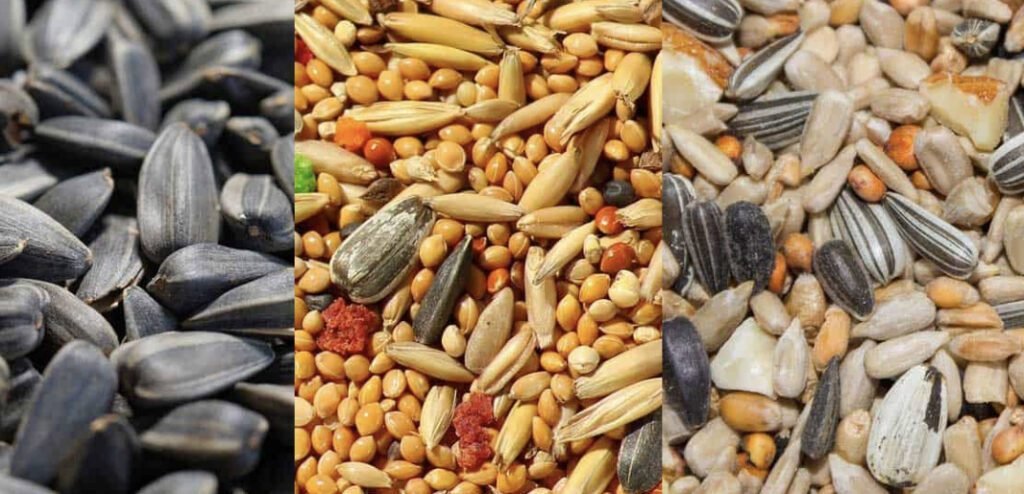

Seeds for Birds
Similarly, if the seed remains in the feeder for more than a week without being consumed, it’s advisable to replace it. Bird seed also tends to degrade over time, especially after several months in storage.
For instance, if you pause your bird feeding during the summer, it’s a good practice to start the new feeding season in the fall with fresh bird seed, as birds might not be attracted to the last season’s leftovers.
Pro tip: To ensure a steady visitation from birds, regularly purchase fresh bird seed and avoid overfilling your feeders. This practice prevents the seed from sitting too long in the feeder and becoming less appealing to birds.
5: You might be feeding the birds leftover human food
The birds you will likely draw to your feeders prefer seeds, nuts, and raw fruit slices.
Offering human food scraps such as bread, meat, or cooked leftovers attracts bird species that might not be your intended visitors. Birds like House Sparrows, Brewer’s Blackbirds, Red-winged Blackbirds, American Crows, Brown-headed Cowbirds, Ring-billed Gulls, Common Grackles, Great-tailed Grackles, and jays are commonly drawn to these kinds of scraps.


Bread and Cereals
These birds are often larger and more aggressive, tending to gather in flocks, and they may intimidate and drive away the smaller birds you’re hoping to see, such as finches, chickadees, nuthatches, sparrows, and juncos.
Pro tip: To specifically cater to the smaller bird species you prefer, it’s best to avoid feeding them human food like bread, pasta, or meats. Instead, focus on providing seeds, nuts, suet, and fruit at your feeders.
6: Your bird feeder is not clean
Moldy seeds lodged in the crevices of your feeder can spoil any new bird seed you put in.
Unclean feeders can lead to birds steering clear of your feeder. You might find yourself puzzled, asking, “Why have my birds vanished?”
It’s essential to clean your feeder regularly, mainly when it’s dirty. This is especially crucial to prepare for the winter bird feeding season in early fall. Starting with a thoroughly cleaned feeder can make a significant difference.
Pro tip: Maintaining the cleanliness of your feeders is key to attracting more birds. A clean feeder ensures a healthier feeding environment and makes it more inviting for birds to visit.
7: Your feeder is the wrong type
The hopper feeder is a versatile and popular choice for many birds. It efficiently dispenses new seeds as consumed, making it a suitable option for various birds.
Platform feeders appeal especially to ground-feeding birds like sparrows and quail. Their simple design can include a roof, but often, they’re just an open space. This openness allows easy access for all birds, but larger birds like crows, pigeons, blackbirds, and jays can dominate the feeder, potentially excluding smaller species.


Different Types of Birdfeeders
Tube feeders favor smaller birds like finches, chickadees, goldfinches, and nuthatches. Their design, often with small or no perches, makes it challenging for larger birds and ground feeders like sparrows to feed from them.
This means premium seeds like black oil sunflower seeds are more likely to be consumed by these smaller birds rather than rapidly eaten by larger birds like jays, blackbirds, and pigeons.
Pro tip: Selecting the right type of bird feeder can greatly influence the variety of birds that visit your backyard. Each feeder type caters to different bird species and feeding preferences, allowing you to attract the specific types of birds you’re interested in.
8: You don’t have a birdbath
The appeal of dripping water is irresistible to birds!
Including a bird bath, fountain, or dripper in your yard can significantly boost the number of birds visiting your feeder.
All birds, not just those drawn to the seeds in your feeders, require water for drinking. Moreover, birds will use your bird bath for drinking and bathing.
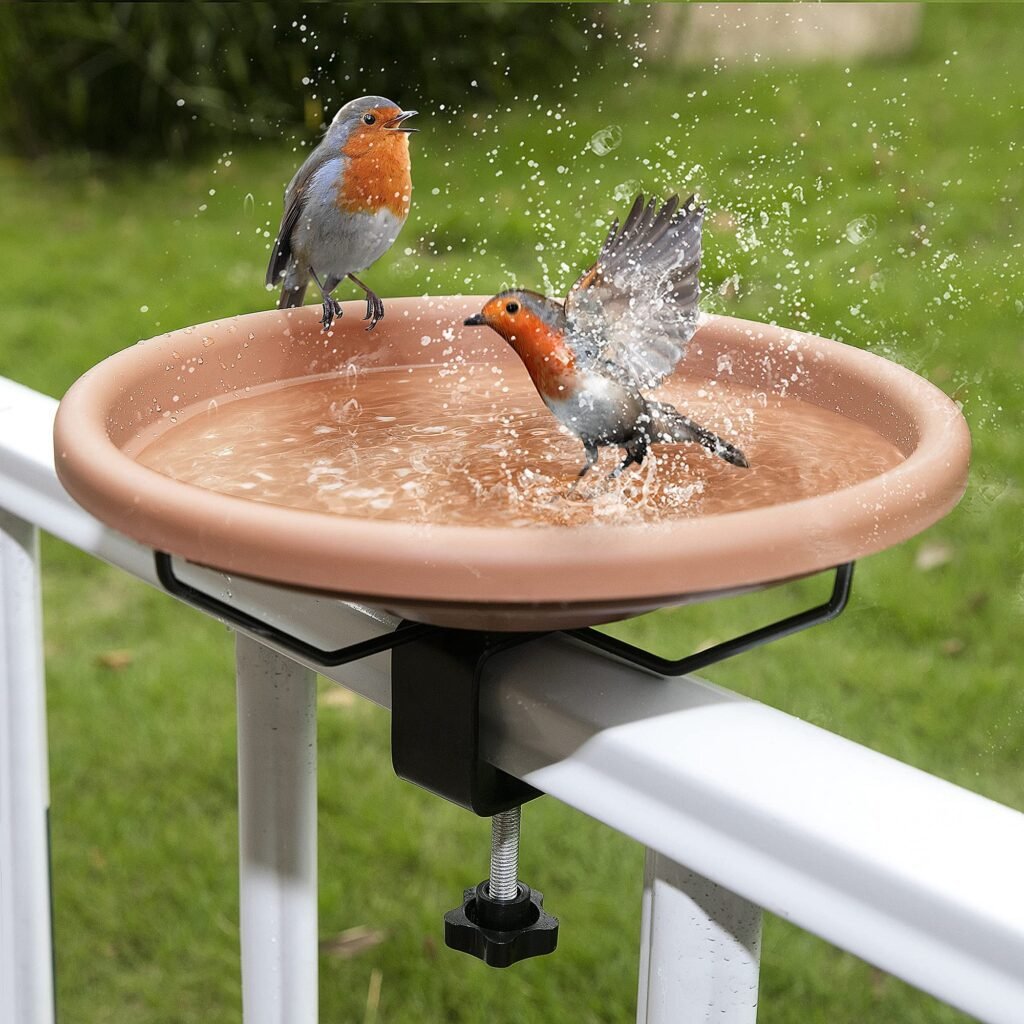

Birdbath
Pro tip: There’s no need for a bird bath to be extravagant or costly. Even a simple shallow bowl or saucer can be effective. You can attract a greater variety of birds to your outdoor space by providing a bird bath along with your feeders.
9: The birds do not see any food in the feeder
When you introduce a new bird feeder to your yard, it naturally draws the attention of local birds. Like most creatures with cognitive abilities, these birds are always on the lookout for food, potential threats, and other species members.
Adding a new feeder to their environment can initially make them cautious. Any change in their familiar territory could represent a new danger.
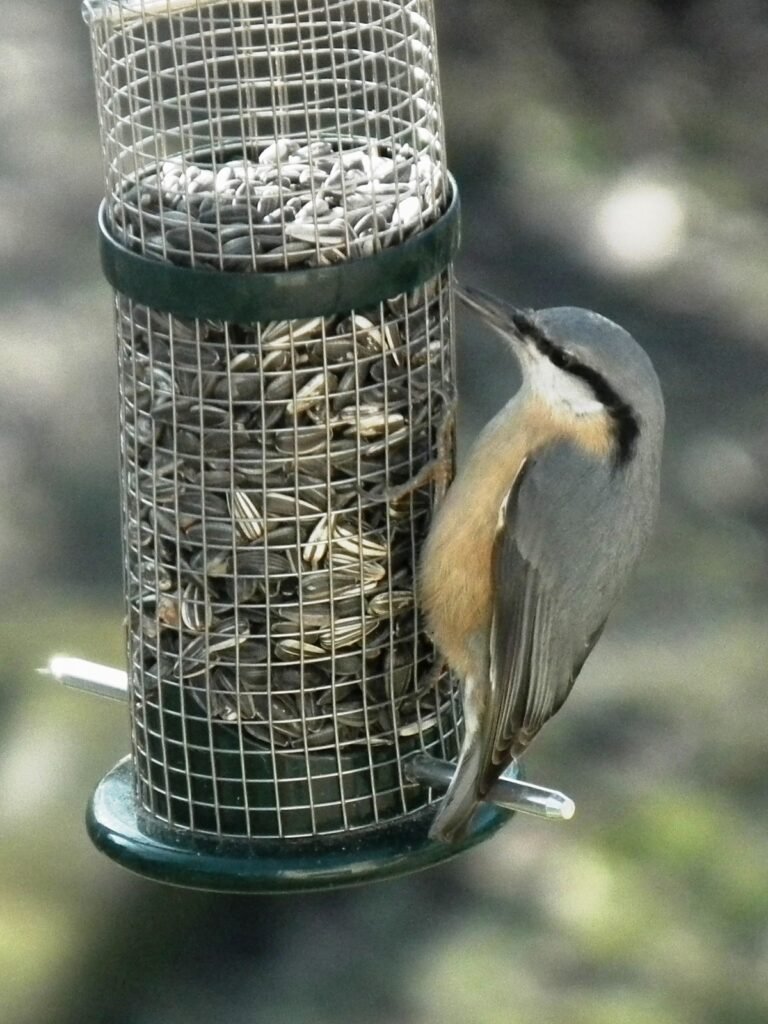

Food in Feeder
Even if they recognize the presence of food, it might take them a few days to overcome their apprehension of this new object. Once they become accustomed to it, they will likely start visiting and feeding regularly.
Pro tip: Scatter some bird seed in visible, open areas around your yard. This could be on a sidewalk, a small saucer of seeds on a fence post, or a deck railing. Placing it in spots where birds can easily see it can help them become more quickly accustomed to the idea of feeding in your yard and, by extension, to the new feeder.
10: The feeder is too high or too low
The placement height of a bird feeder is generally not a major issue unless there’s another specific concern at play.
Birds are versatile in their feeding habits, with some species foraging on the ground and others in the treetops, though not always the same species in both locations.
Certain birds are adaptable and can find food at various heights. However, specific preferences do exist. Sparrows, doves, and quail often favor feeding closer to the ground or directly on it. In contrast, finches and nuthatches typically prefer feeding at higher elevations.
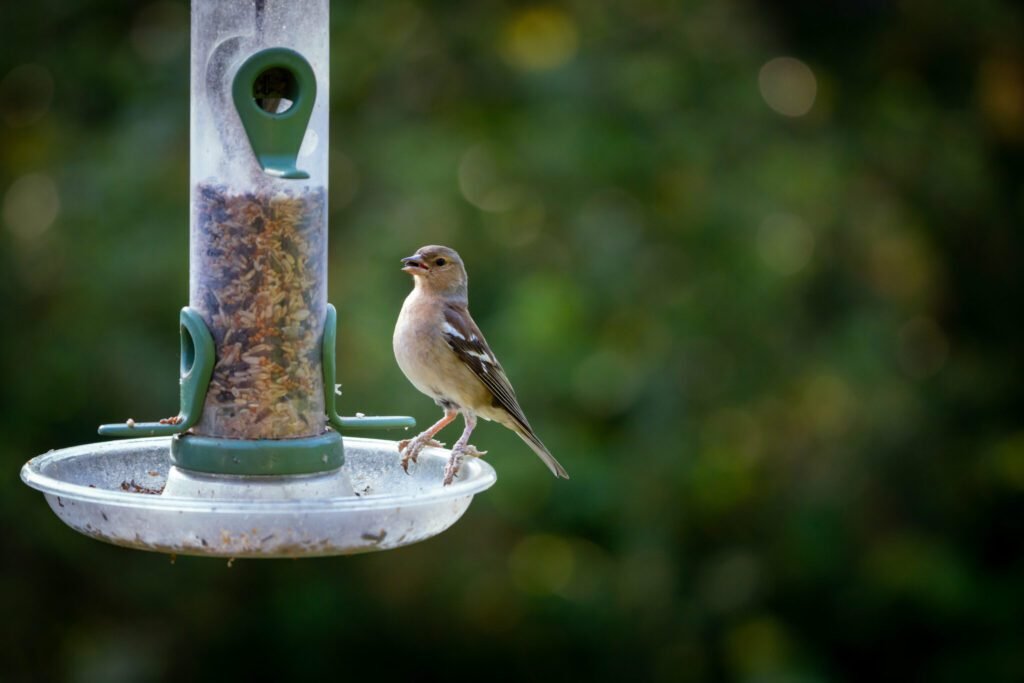

Feeder Too High
A practical solution is to set your bird feeder at around 5 feet. This elevation effectively keeps the feeder out of reach of common pests and predators, such as squirrels and cats, while being accessible to many birds.
Pro tip: Consider adjusting the feeder’s height to attract the specific types of birds you’re interested in. Each bird species has its preferred feeding level, and catering to these preferences can help attract them to your feeder.
11: The squirrels have reached your bird feeder
A common bird-feeding scenario is the age-old struggle between birds and squirrels over feeder access.
Squirrels share many dietary preferences with birds, making them frequent and often unwelcome visitors to bird feeders. The idea of an utterly squirrel-proof bird feeder is almost contradictory, as squirrels are incredibly adept at circumventing most barriers.


Squirrel Bird Feeder
However, there are strategies to reduce squirrel interference significantly. Squirrels can leap up to 4 or 5 feet vertically and as far as 15 feet horizontally, and they are skilled climbers.
Pro tip: To deter squirrels from dominating your bird feeder, consider using safflower seeds, nectar, and Niger seed, which are less appealing to squirrels. Additionally, employing squirrel-proof bird feeders and installing squirrel baffles either above or below the feeders can effectively keep them at bay.
12: The predators have taken over
As winter sets in and natural food sources for birds diminish, they tend to gather more around feeders. This increased concentration of birds can attract predators, which may not always be noticeable to us but are indeed detected by the birds.
Birds often respond to predators by vocalizing loudly and mobbing the threat to drive it away. If you hear jays, crows, or other birds making a commotion, it’s worth looking around to identify what’s causing their alarm.
One common issue could be neighborhood cats lurking near your feeders, which can lead to birds either abandoning your feeders or becoming much more wary and quick to flee.
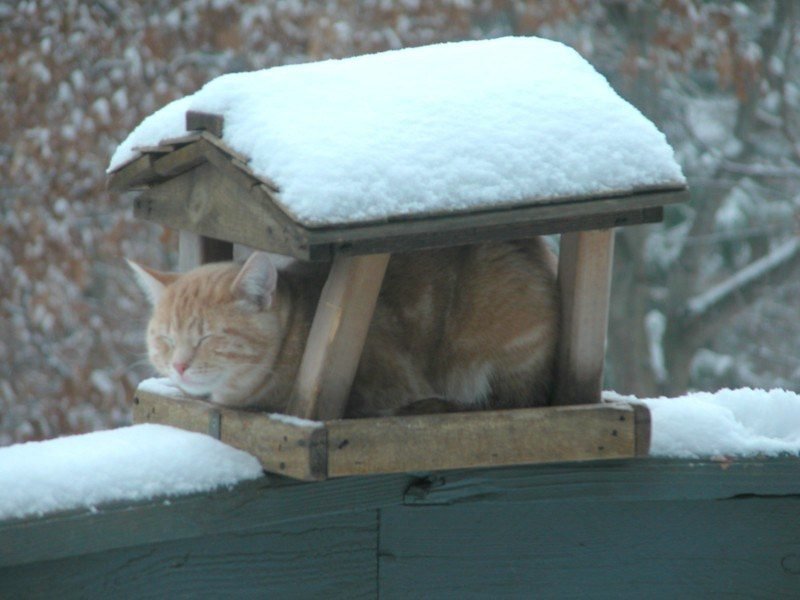

Cool Cat in Bird Feeder
Pro tip: In cases where a hawk has started frequenting the area around your feeder, a temporary solution is to cease feeding for a couple of weeks. This pause in feeding activity can encourage the hawk to seek hunting grounds elsewhere, making it safer for the birds to return to your feeder.
13: Too much human or pet activity around the bird feeder
Even if your pets are well-behaved and don’t actively chase birds, their mere presence can cause birds to feel uneasy and possibly lead them to avoid your feeders.
Birds may experience some stress even during the brief periods when your pets are outdoors.
While it might not seem obvious, birds are likely to be on alert in the presence of your pets, maintaining a heightened sense of caution even as they continue to visit your feeder.


Human Interaction Bird Feeder
Consider other potential sources of disturbance, such as increased outdoor activity by children, frequent vehicle movements, visitors, or living on a busy street. Observe how birds at your feeder react during these times — do they remain calm or tend to flee en masse?
Though seemingly minor, all these factors can cumulatively create a stressful and unsafe environment for birds. Over time, they may opt for more serene feeding locations.
Pro tip: To encourage birds to frequent your feeders, try to minimize disruptions in your yard. This could involve relocating your feeders to a quieter area or adding a hedge or barrier to shield the birds from street noise and other disturbances.
14: The birds have gone under their nesting period
Birds often alter their feeder-visiting habits depending on the season, leading to variations in their presence throughout the year. They become scarce in specific periods, such as spring, summer, or fall.
Many seed-eating birds, including chickadees, nuthatches, sparrows, grosbeaks, buntings, and others, tend to reduce their visits to feeders in early summer. This decrease is mainly due to their nesting activities during this time.
During the nesting season, these birds provide insects to their nestlings and fledglings. The adult birds are searching for insects, a crucial protein source for their young. Consequently, they might not visit your feeders for seeds, even for their own consumption.


Birds in Nest
Therefore, it’s common to observe a significant decline in the number and variety of birds at your feeders in early summer.
Pro tip: Consider adding a bird bath or water feature to maintain bird activity around your feeders during the summer. This can help attract birds, as water is an essential resource, especially in warmer months.
15: The birds have migrated away
The birds that frequented your feeders during winter, such as Chipping Sparrows, White-crowned Sparrows, Golden-crowned Sparrows, White-throated Sparrows, Tree Sparrows, Dark-eyed Juncos, Pine Siskins, and Evening Grosbeaks, often change their visiting patterns in summer.
Depending on your geographic location, particularly if you’re in a more northern area, some of these species might continue to visit your feeders in the summer, while others won’t.
The absence of these winter birds during other seasons can be attributed to migration. Many birds migrate northward in the spring, leaving behind their winter feeding grounds, which include your feeders.
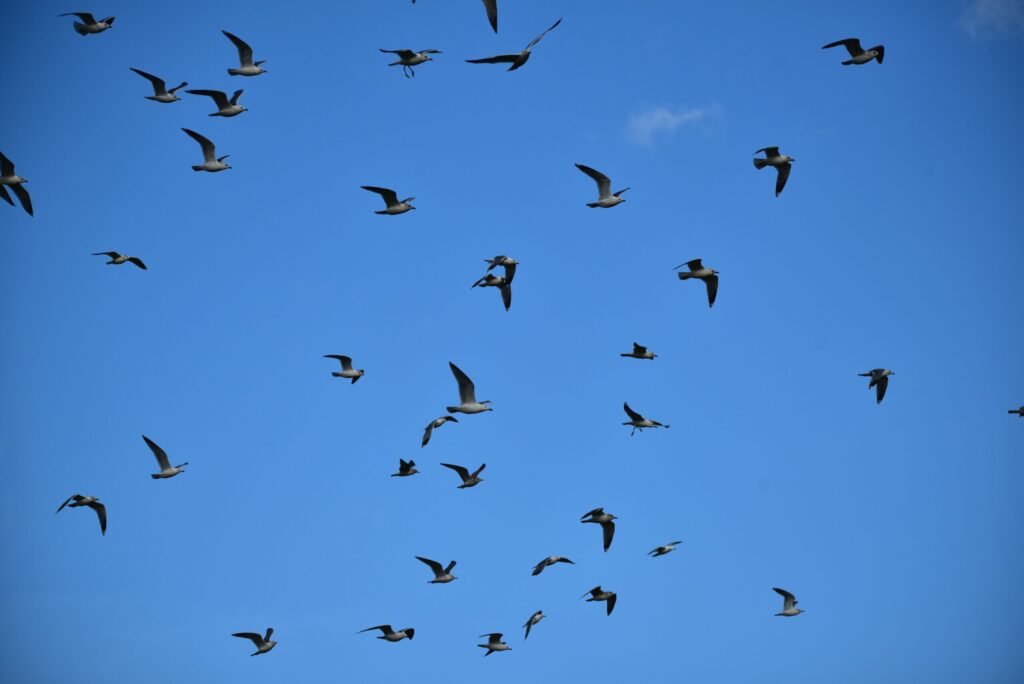

Flock of Birds
This seasonal migration results in an annual change in the bird population visiting your feeder. It’s a natural and remarkable phenomenon that leads to a rotating variety of bird species throughout the year.
As you observe these changes, you’re witnessing these birds’ incredible journey and adaptability as they migrate.
Conclusion
Now that you understand why birds may not be frequenting your feeder, you can address these issues and create a more inviting environment for them. Whether it’s adjusting the type of food you offer, ensuring the cleanliness of the feeder, or considering the placement and safety of the feeding area, these changes can make a significant difference.
Starting today, with these adjustments and a bit of patience, you should soon see an increase in the number of birds visiting your feeder. This will bring more life to your property and provide the delightful experience of observing and listening to a greater variety of birds singing and interacting in your yard.
![Why Birds Aren’t Coming to the Feeder? [Causes & Solutions]](https://petsfm.com/wp-content/uploads/2023/12/Why-Birds-Arent-Coming-to-the-Feeder-Causes-Solutions-634x630.jpg)
